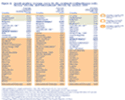
Table: International comparisons
|
International Comparisons in Reading Literacy
Fourth-grade reading literacy in the United States and 34 other countries in 2001
U.S. fourth-graders outperformed their counterparts in 23 of the 34 other participating countries, although they scored lower than students in England, the Netherlands, and Sweden.
|
Provided by
National Center for Education Statistics as of April 23, 2003.
|
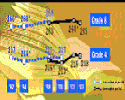
Figure: Reading Achievement
|
Reading Achievement
4th and 8th graders in 2003
No significant change was detected between 2002 and 2003 in the average score for fourth-graders. The average fourth-grade score in 2003 was not found to differ significantly from that in 1992.
|
Provided by
National Center for Education Statistics as of November 21, 2003.
|
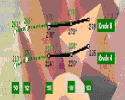
Figure: Mathematics Achievement
|
Mathematics Achievement
4th and 8th graders in 2003
Average scores were higher in 2003 than in all the previous assessment years at both grades 4 and 8.
|
Provided by
National Center for Education Statistics as of November 21, 2003.
|
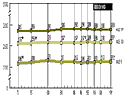
CHART: Trends in Academic Progress
|
Trends in Academic Progress
Reading, mathematics, and science performance of 9-, 13-, and 17-year-olds
Generally, the trends in mathematics and science are characterized by declines in the 1970s, followed by increases during the 1980s and early 1990s, and mostly stable performance since then. Some gains are also evident in reading, but they are modest.
|
Provided by
National Center for Education Statistics as of September 1, 2000.
|
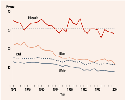
Chart: Status Dropouts
|
Dropout Rate
Status Dropout Rates, by Race/Ethnicity
Since 1972, status dropout rates for Whites and Blacks ages 16–24 have declined; rates for Hispanics have not decreased and remain higher than those for other racial/ethnic groups.
|
Provided by
National Center for Education Statistics as of November 21, 2003.
|
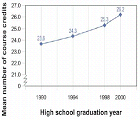
Figure: Mean course credits earned by high school graduates
|
The High School Transcript Study
Course Credits, Course Subjects, and GPA in U.S. Public High Schools, 1990-2000
Overall, the number of course credits earned by high school graduates increased from an average of 23.6 in 1990 to 26.2 in 2000. From 1990 to 2000, the grade point average (GPA) earned by high school graduates increased from 2.68 to 2.94.
|
Provided by
National Center for Education Statistics as of May 21, 2004.
|
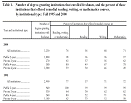
Table: Remedial Education
|
Postsecondary Remedial Education
The prevalence of remedial education courses for college freshmen: changes from 1995 to 2000
Between 1995 and 2000, there was no significant change in the proportion of institutions (76 percent) offering remedial education. Likewise, the percentage of students taking remedial courses remained constant at 28 percent. However, students on average are spending more time in such courses.
|
Provided by
National Center for Education Statistics as of March 18, 2004.
|

Figure: Volunteer Service
|
Volunteer Service
Community service involvement by young people from high school through early adulthood
Overall, volunteering decreased among young adults after high school. Students who performed only mandatory community service in high school were not found to be any more likely to volunteer 8 years later than those who did not volunteer at all in high school.
|
Provided by
National Center for Education Statistics as of September 1, 2004.
|
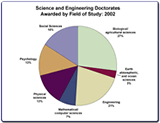
CHART: Doctoral Degrees Awarded in S&E; and non-S&E; fields
|
Doctoral Degrees Awarded in Science and Engineering Fields
Doctoral Degrees Awarded in S&E;
In 2002, U.S. universities conferred 24,558 doctorate awards in science and engineering (S&E;) fields, down from 25,525 in 2001.
|
Previous
25,525
2001
|
Current
24,558
2002
|
Provided by
National Science Foundation/SRS as of November 2003.
|

CHART: Percent Women Among S&E; Doctorate Awards
|
Percent of Doctorate Awards in Science & Engineering Awarded to Women
Doctorate Awards in S&E; Awarded to Women
The representation of women among science and engineering doctorate recipients continues to increase--women received 37.3 percent of all doctorates awarded in 2002 versus 30.1 percent in 1993.
|
Previous
36.5%
2001
|
Current
37.3%
2002
|
Provided by
National Science Foundation/SRS as of November 2003.
|
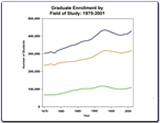
CHART: Graduate Enrollment, by Area of Study
|
Graduate Enrollment in Science and Engineering
Graduate Enrollment in S&E;
After steady decreases between 1994 and 1998, the number of graduate students in science and engineering has continued to rise in 2000 and 2001.
|
Previous
414,683
2000
|
Current
429,492
2001
|
Provided by
National Science Foundation/SRS as of June 2003.
|
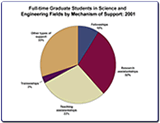
CHART: Full-time Graduate Students, by Mechanism of Support
|
Percent of Full-time S&E; Graduate Students Supported by Research Assistantships
Support Sources for S&E; Graduate Students
During the period 1994-2001, the proportion of full-time science and engineering graduate students primarily supported under research assistantships remained relatively steady increasing from 31 percent to 32 percent.
|
Previous
31.7%
2000
|
Current
32.1%
2001
|
Provided by
National Science Foundation/SRS as of June 2003.
|